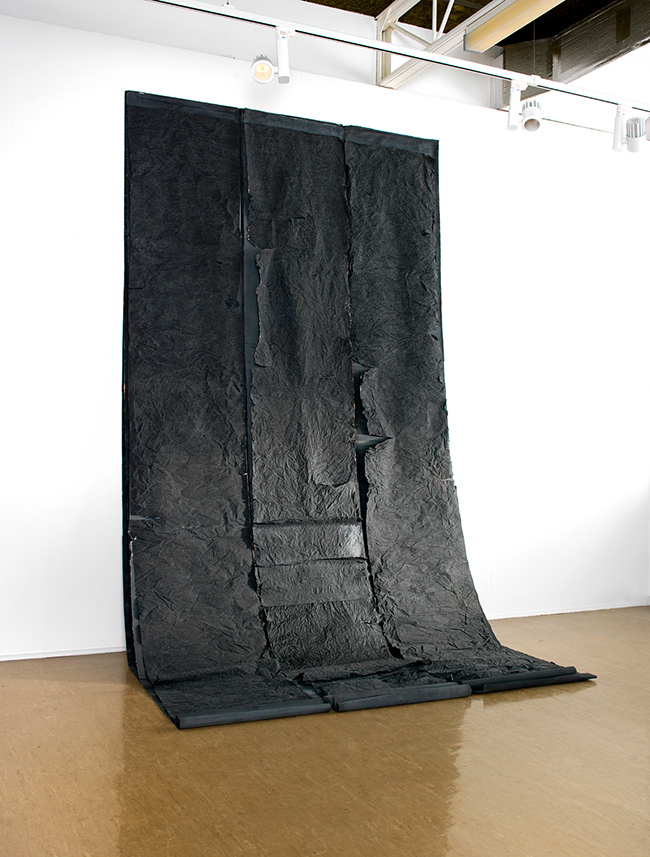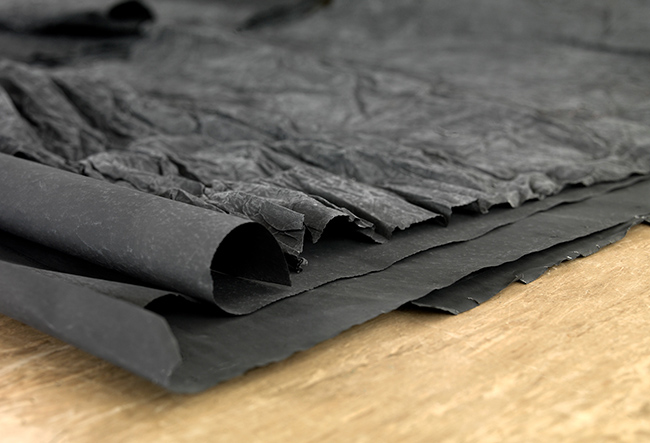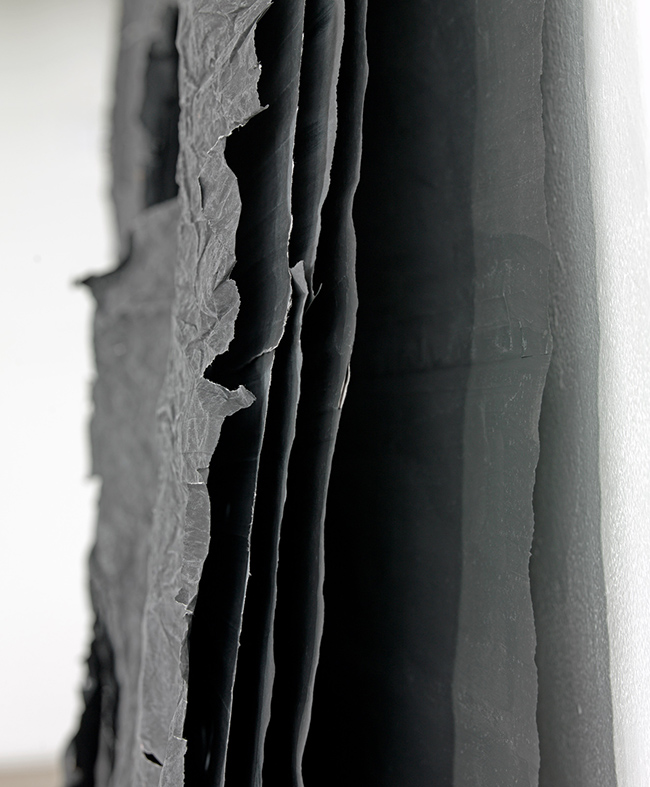In the scenic landscapes of Scotland, artist Bea Last brings a unique perspective to the world of sculptural drawing. Currently based in this picturesque setting, Last’s creative practice is a testament to her commitment to using recycled, repurposed, found, salvaged, or given materials. Her work, often abstract in form, serves as a dialogue that delves into topics ranging from conflict and humanitarianism to the looming climate crisis.

One of Last’s notable works is “Descent of Man,” a captivating piece that stands at 375 inches in height and 75 inches in width. Created using recycled broadsheet newspapers from the tumultuous year 2017, the artwork employs emulsion and graphite, transforming traditional drawing materials into a contemporary exploration of sculptural forms.
Last’s statement on “Descent of Man” reveals the profound influences behind this piece. Originating from her time on a supported Visual Arts Development Residency at Cove Park in Argyll and Bute, Scotland, the artwork emerged as a response to the divisive events of 2017. Funded through Creative Scotland in partnership with UpLand Arts cic and D&G Council, this residency provided the fertile ground for Last’s artistic exploration.

The newspapers from 2017, with headlines blaring news of armed conflicts, political upheavals, and a surge of natural disasters, became the raw material for “Descent of Man.” It was a year marked by division—Scotland’s push for independence, the UK’s Brexit journey, and Donald Trump’s inauguration. The artwork reflects Last’s cathartic act of physically painting over the broadsheets, symbolically addressing the state of humanity in that turbulent year.

“Descent of Man” encapsulates the essence of Last’s sculptural drawings. Each piece, beyond its thematic significance, maintains an aesthetic value that underscores the artist’s craftsmanship. The delicacy and fragility of the layered edges contribute to the monumental quality often attributed to Last’s work.

In Last’s hands, traditional drawing materials take on a new life, inviting viewers to contemplate the boundaries, barriers, and borders that permeate our world. The artist’s exploration of division and its consequences is palpable in the layers of newspapers, each stroke of paint, and every graphite mark. “Descent of Man” serves as both a visual representation of a specific moment in time and a timeless reflection on the human condition.

Bea Last’s approach to her craft is Spartan yet conversational, allowing her audience to engage with the layers of meaning embedded in her sculptural drawings. Through “Descent of Man,” Last invites us to confront the realities of our shared history and challenges us to contemplate the ever-evolving boundaries that shape our collective existence.

